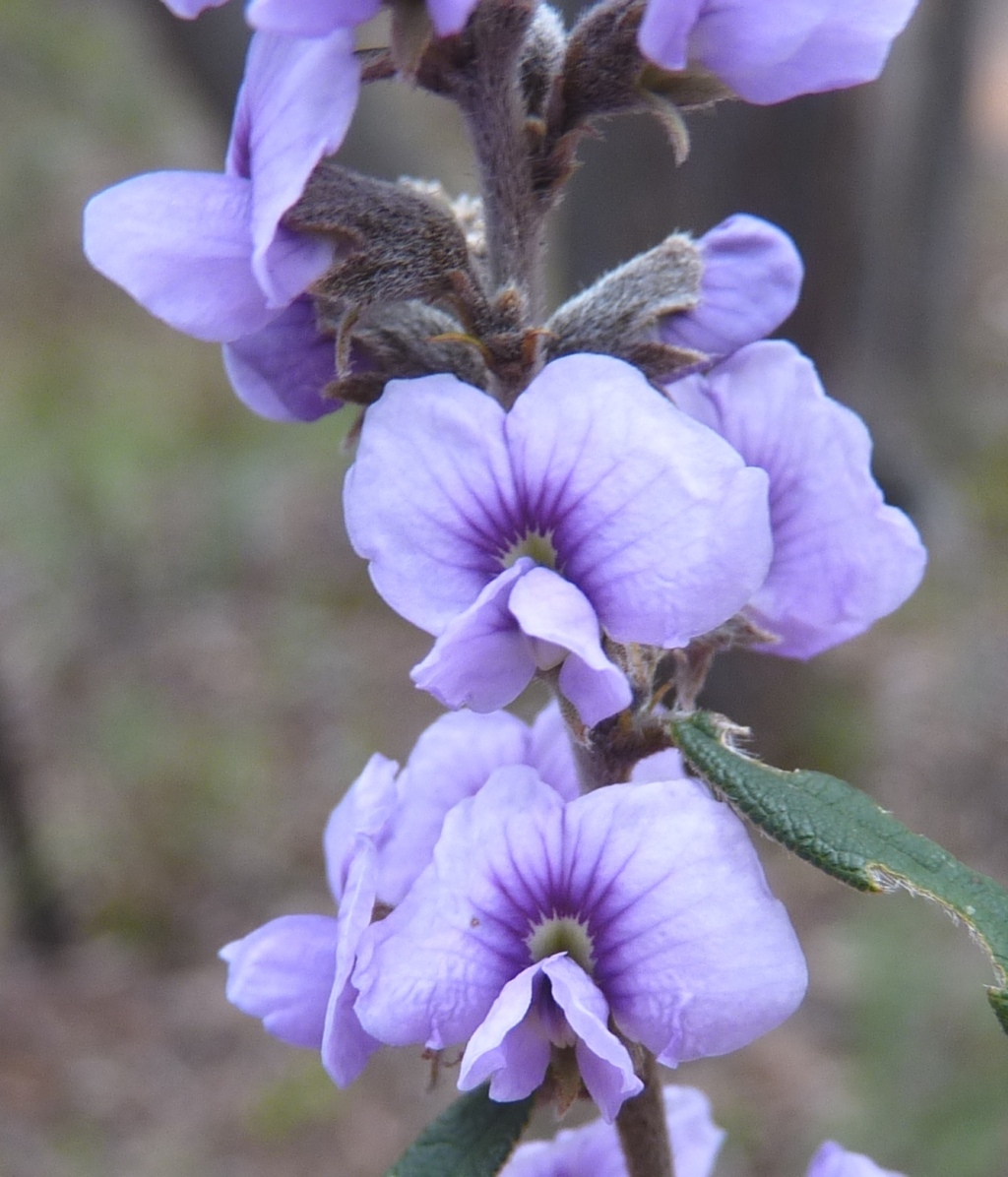Hovea heterophylla
A.Cunn. ex Hook.f.Procumbent, straggling or erect subshrub to 1 m high; stems with sparse to dense, appressed to slightly spreading antrorse hairs. Leaves usually dimorphic: the lower usually ovate or elliptic, 1–5 cm long, 0.2–1.6 cm wide; the upper linear to narrowly ovate-oblong, 1.4–11 cm long, 0.3–1.0 cm wide; upper surface glabrous and usually minutely bullate, arched up either side of midrib; lower surface sparingly to densely appressed-pubescent; margins slightly recurved; stipules subulate 0.8–1.8 mm long, reflexed apically, ± persistent. Inflorescences sessile or almost so, mostly 2- or 3-flowered; pedicels to 3 mm long; bracts narrow-ovate or oblong; bracteoles inserted 0.8–1.5 mm below bracts; upper lobes of calyx 4.8–5.8 mm long (including tube); corolla bluish-mauve, rarely white; standard 7–9 mm long (including claw); stamen-filaments 3–5.5 mm long. Pods sessile. Flowers mainly Jul.–Nov.
Wim, GleP, VVP, VRiv, GipP, OtP, Gold, CVU, GGr, DunT, NIS, EGL, EGU, WPro, HSF, HNF, OtR, Strz, MonT, VAlp. Widespread in Victoria except in the north-west. Occurs in open-forest, woodland, heath or grassland where it favours shallow stony or sandy soils.
Hovea heterophylla has previously been included in H. linearis, the latter being largely restricted to coastal New South Wales, and is distinguished by the narrower leaves with a coarser reticulate patterning, longer calyx and glabrous pods.
Ross, J.H. (1996). Hovea. In: Walsh, N.G.; Entwisle, T.J., Flora of Victoria Vol. 3, Dicotyledons Winteraceae to Myrtaceae, pp. 804–808. Inkata Press, Melbourne.
 Spinning
Spinning


